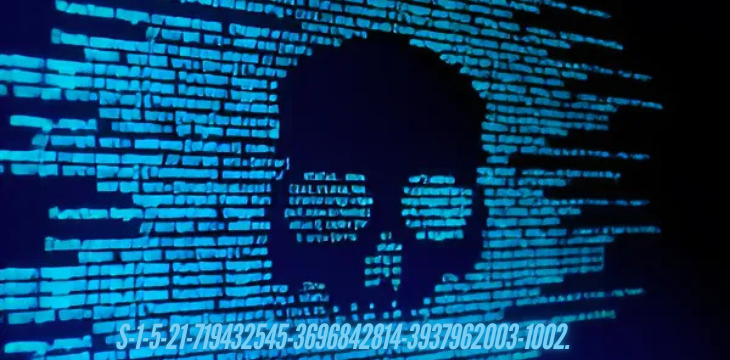Have you ever come across a string of numbers like “S-1-5-21-719432545-3696842814-3937962003-1002” and wondered what on earth it meant? It looks like some secret code or perhaps a glitch in the matrix. But in reality, it’s a Security Identifier (SID), and it plays a crucial role in the way Windows manages user accounts and permissions.
In this article, we’ll dive deep into the mysterious world of SIDs, focusing specifically on the SID “S-1-5-21-719432545-3696842814-3937962003-1002’s.” We’ll explain what it is, how it works, why it’s important, and how you can interact with it to manage your Windows user accounts more effectively. Let’s unravel this code and see what lies beneath!
What is S-1-5-21-719432545-3696842814-3937962003-1002?
SIDs (Security Identifiers) are unique codes assigned by Windows to every user, group, and computer account in a Windows environment. They help the system identify and manage each account’s access rights. But let’s break down what makes “S-1-5-21-719432545-3696842814-3937962003-1002’s” so special.
Breaking Down the Components S-1-5-21-719432545-3696842814-3937962003-1002
The SID “S-1-5-21-719432545-3696842814-3937962003-1002’s” can be divided into specific parts that represent different pieces of information:
- S: Indicates that this is a Security Identifier.
- 1: The revision level of the SID structure.
- 5: Represents the identifier authority value, usually referring to the NT Authority.
- 21: A sub-authority that often denotes a domain or local computer.
- 719432545-3696842814-3937962003: These numbers form the unique domain or computer identifier.
- 1002: This is the Relative Identifier (RID), signifying a specific user or group within the domain.
Understanding these parts allows us to see that this SID belongs to a user account created on a specific computer or domain, with the “1002” indicating the order in which the user was created.
What Does the “1002” Mean?
In the SID “S-1-5-21-719432545-3696842814-3937962003-1002’s,” the trailing “1002’s” plays a significant role. It usually represents a user account’s relative position in the order of creation. The first account might be “1000,” the second “1001,” and so on. In this case, “1002” indicates that it’s one of the earliest accounts created on this particular system or domain.
Why Are SIDs Like S-1-5-21-719432545-3696842814-3937962003-1002 Important?
You might wonder why anyone should care about these cryptic codes. But in the world of IT security and user management, SIDs are like fingerprints—they’re unique to each user and crucial for system administration.
Key Reasons SIDs Matter S-1-5-21-719432545-3696842814-3937962003-1002
- Unique Identification: SIDs ensure that even if a username changes, the account’s identity remains the same. This prevents unauthorized access or mistaken identity issues.
- Security and Permissions Management: They’re used to set and verify permissions for accessing files, folders, and other resources.
- Audit Trails: SIDs are logged in security events, making it easier to track user activity and identify potential breaches.
- System Stability: Removing or altering SIDs without proper knowledge can disrupt access rights and system functions.
Real-World Applications of SIDs
- Corporate IT Departments: SIDs help manage user accounts across thousands of devices, ensuring the right people have access to the right resources.
- Forensic Analysis: Security professionals use SIDs to track user activities during an investigation.
- Server Administration: System admins use SIDs to configure permissions on databases and servers.
How to Find S-1-5-21-719432545-3696842814-3937962003-1002 on Your System
Now that you understand what SIDs are and why they matter, you might want to locate this specific SID on your computer or network. Here’s a quick guide on how to do that.
Using Command Prompt S-1-5-21-719432545-3696842814-3937962003-1002’s
You can use the Command Prompt to find the SID for a specific user. Here’s how:
- Open the Command Prompt with administrator privileges.
- Type the following command:arduinoCopy code
wmic useraccount get name,sid - Press Enter, and you’ll see a list of all user accounts and their corresponding SIDs.
This list will include the SID “S-1-5-21-719432545-3696842814-3937962003-1002’s” if that user exists on your system.
Using PowerShell
Alternatively, PowerShell can also be used for this purpose:
- Open PowerShell as an administrator.
- Run the command:mathematicaCopy code
Get-WmiObject Win32_UserAccount | Select Name, SID - Review the output to locate the desired SID.
Visualizing the User Account
- If you identify the user associated with “S-1-5-21-719432545-3696842814-3937962003-1002’s,” you can manage that account directly from Computer Management under Local Users and Groups.
- Knowing the SID helps to modify permissions without affecting other users.
FAQs About SIDs and User Accounts
What happens if a SID like S-1-5-21-719432545-3696842814-3937962003-1002 is, deleted?
If you delete a SID, you risk losing access to files, folders, or even the user account itself. The operating system will no longer recognize the user’s permissions, potentially causing system errors.
Can two users have the same SID?
No, SIDs are unique. Each user or group is assigned a distinct SID when, they’re created. Even if you recreate a deleted user with the same name, they’ll receive a new SID.
How do SIDs affect file permissions?
Permissions are, tied to SIDs, not usernames. If a user’s SID changes (like when an account is deleted and recreated), they lose access to files that were, linked to their old SID.
Best Practices for Managing SIDs
When managing SIDs, there are a few best practices you should keep in mind to avoid any unwanted complications:
- Never manually edit or delete SIDs unless you’re fully aware of the consequences.
- Regularly back up user accounts and permissions to ensure you can restore access if things go wrong.
- Use automation tools to handle bulk account and SID management in larger networks.
Conclusion
SIDs like “S-1-5-21-719432545-3696842814-3937962003-1002” might seem intimidating at first glance, but they’re essential to how Windows manages user accounts and security. Understanding their structure and function can help you troubleshoot issues, secure your systems, and maintain smoother operations.
